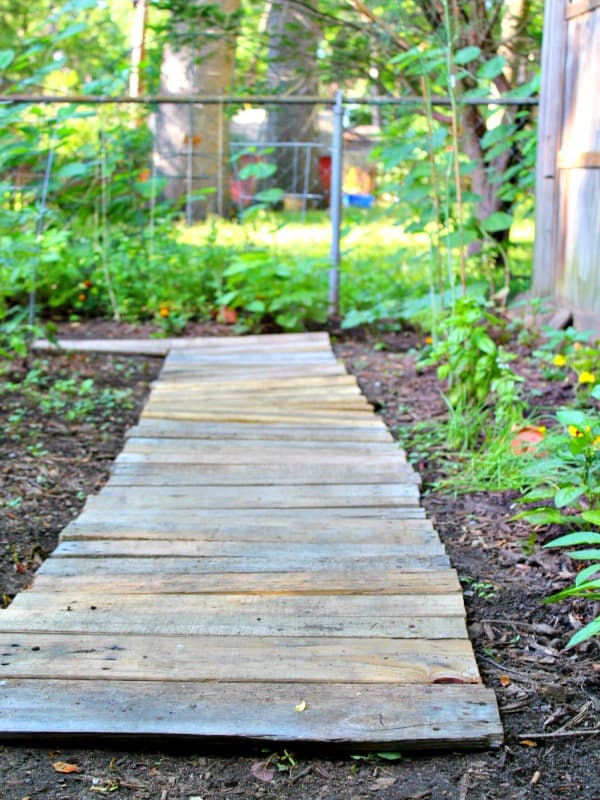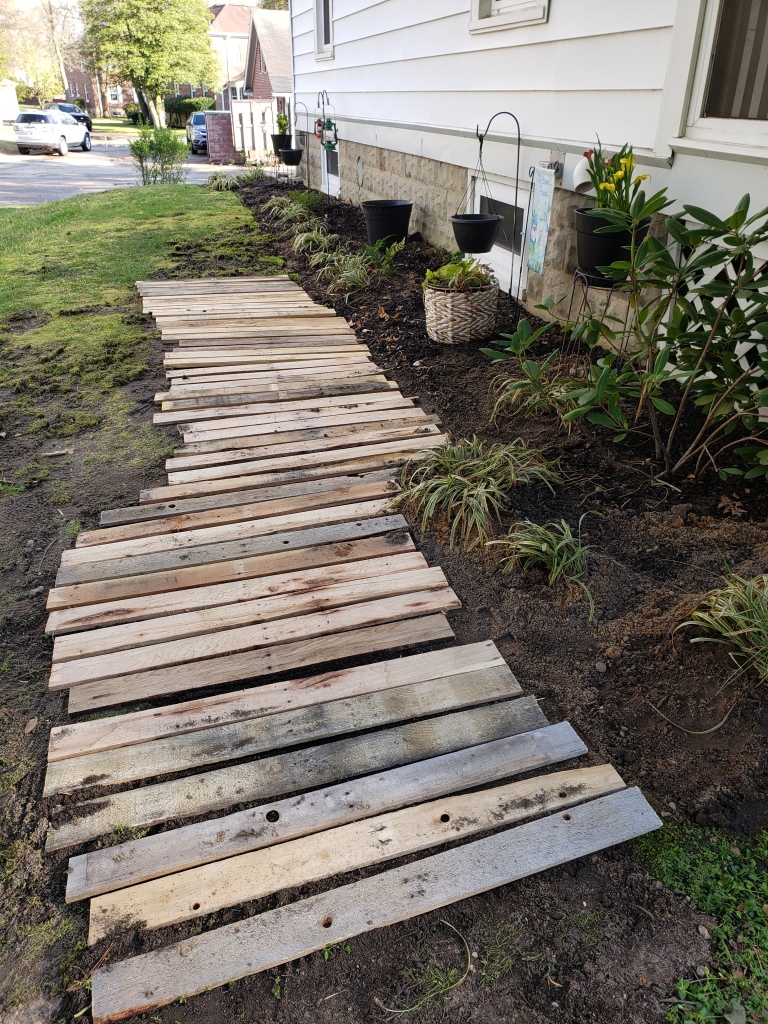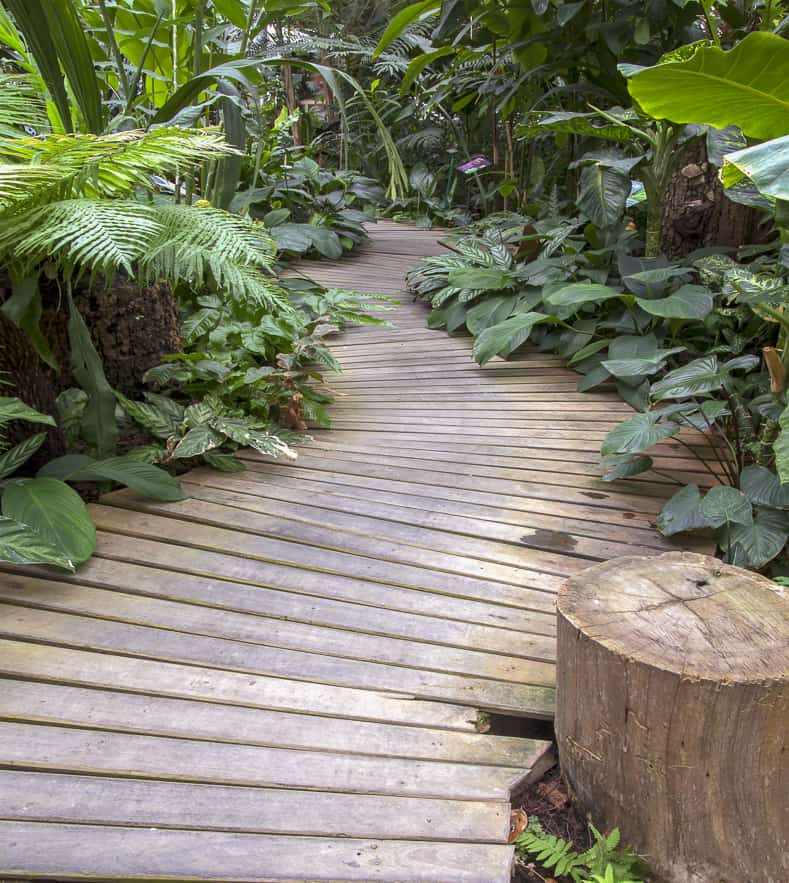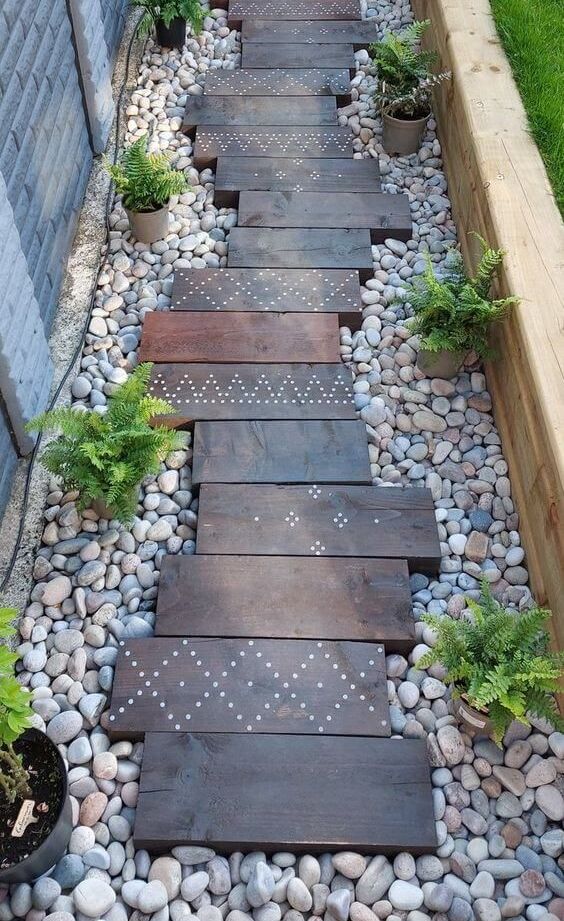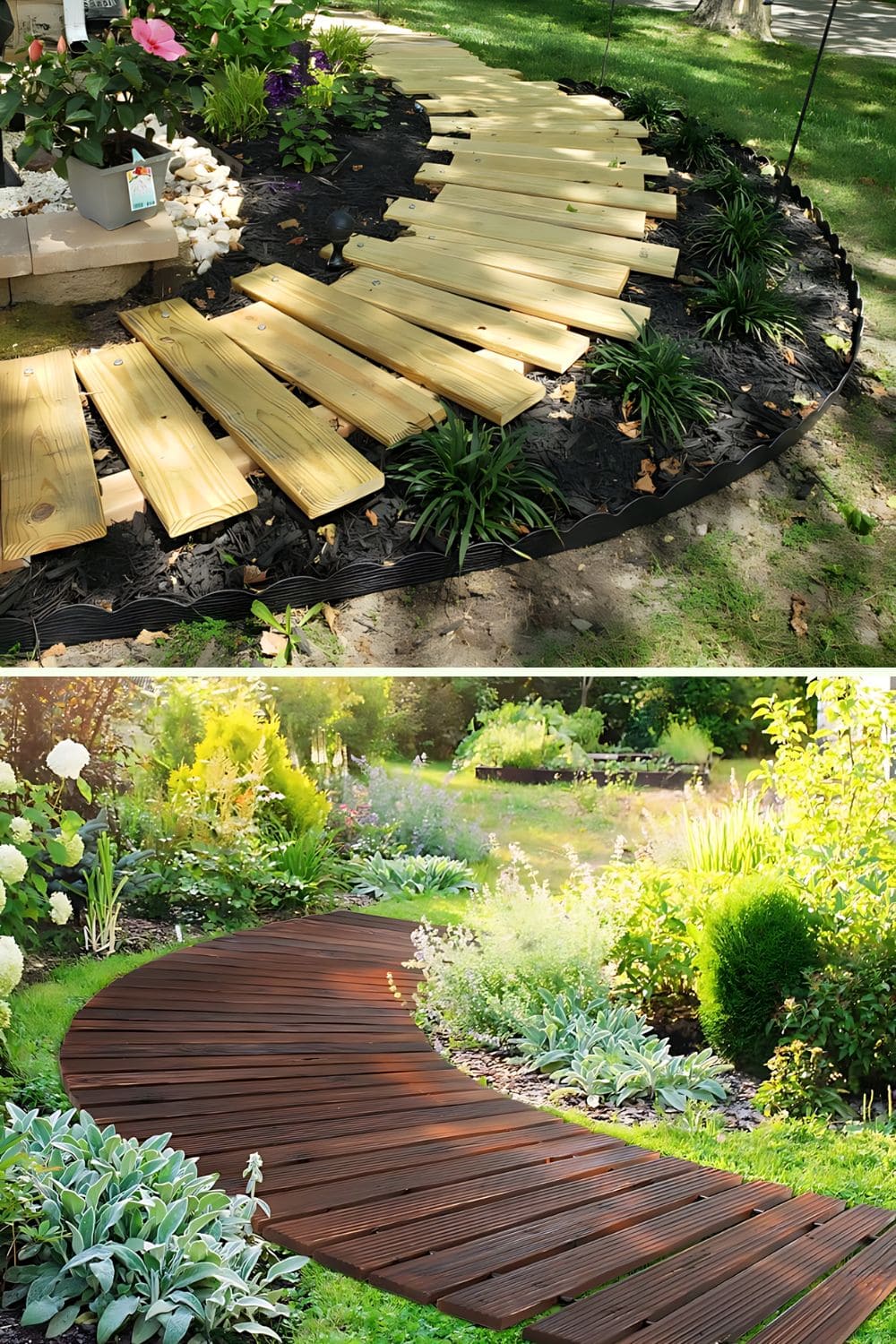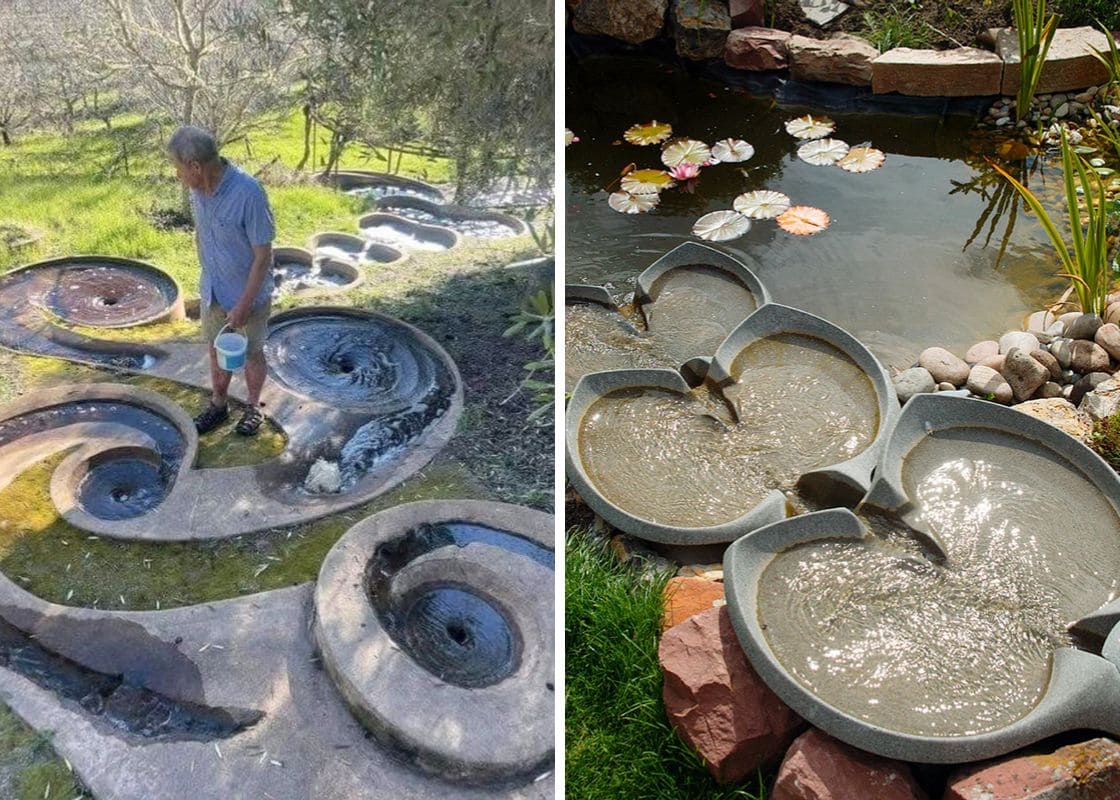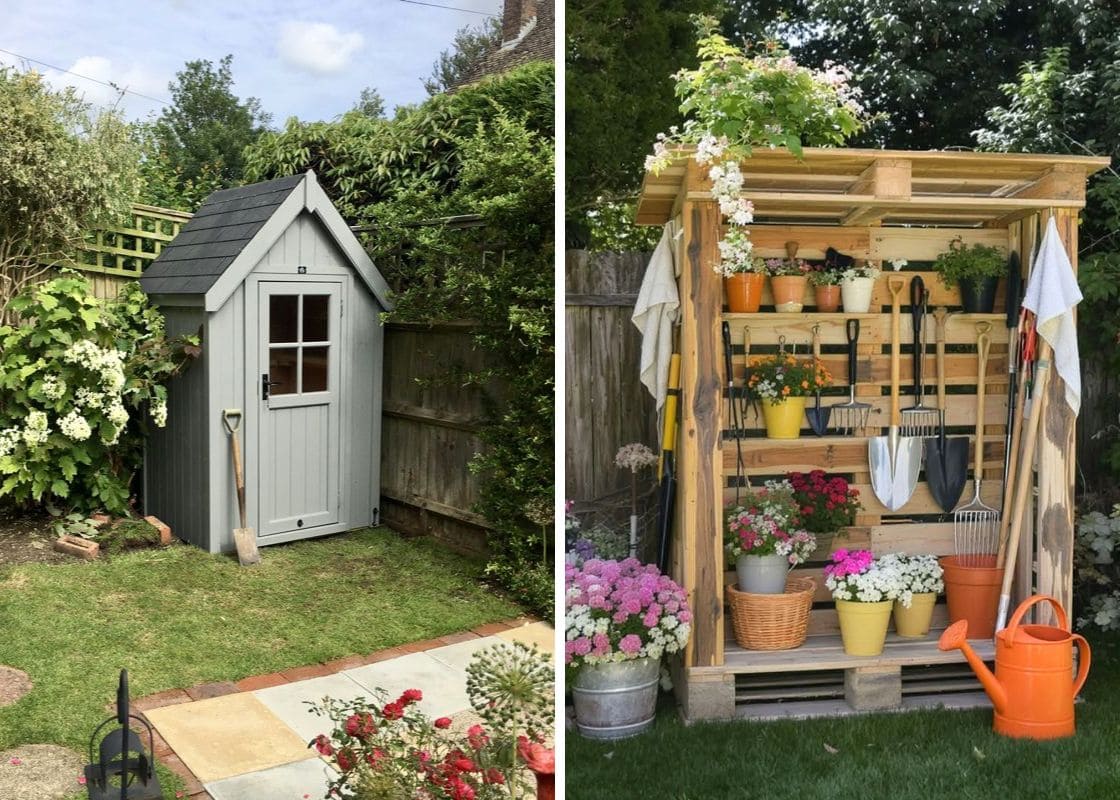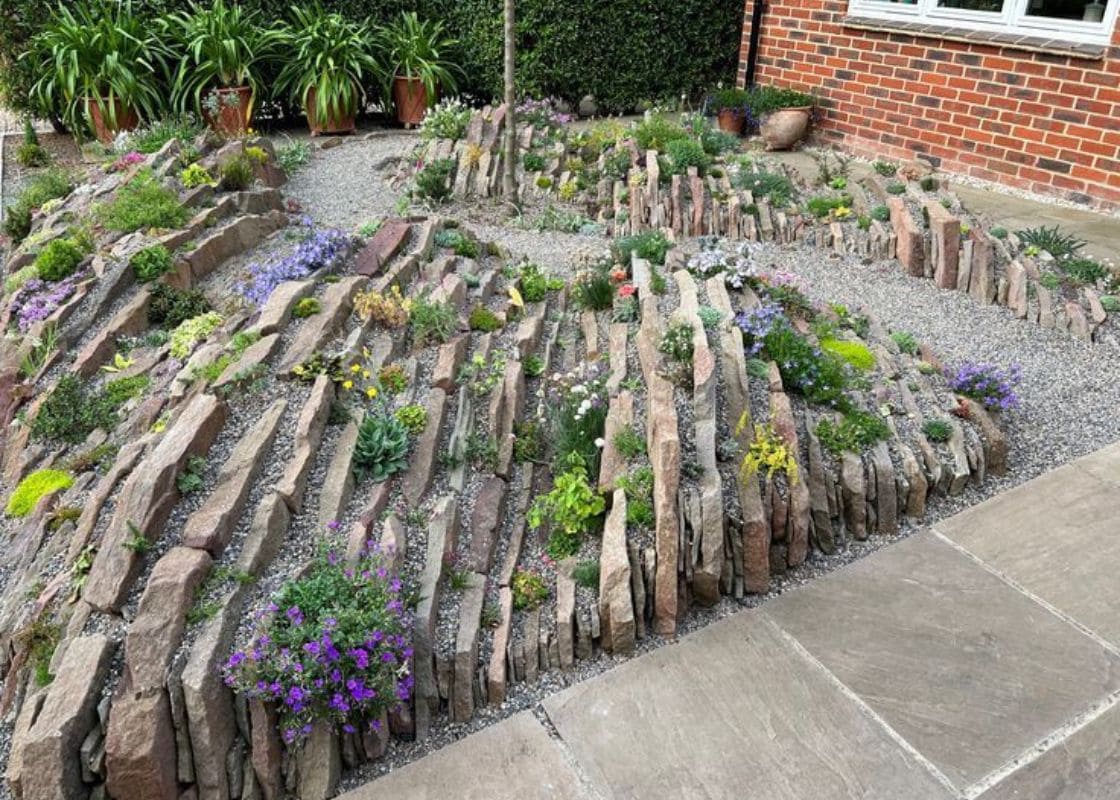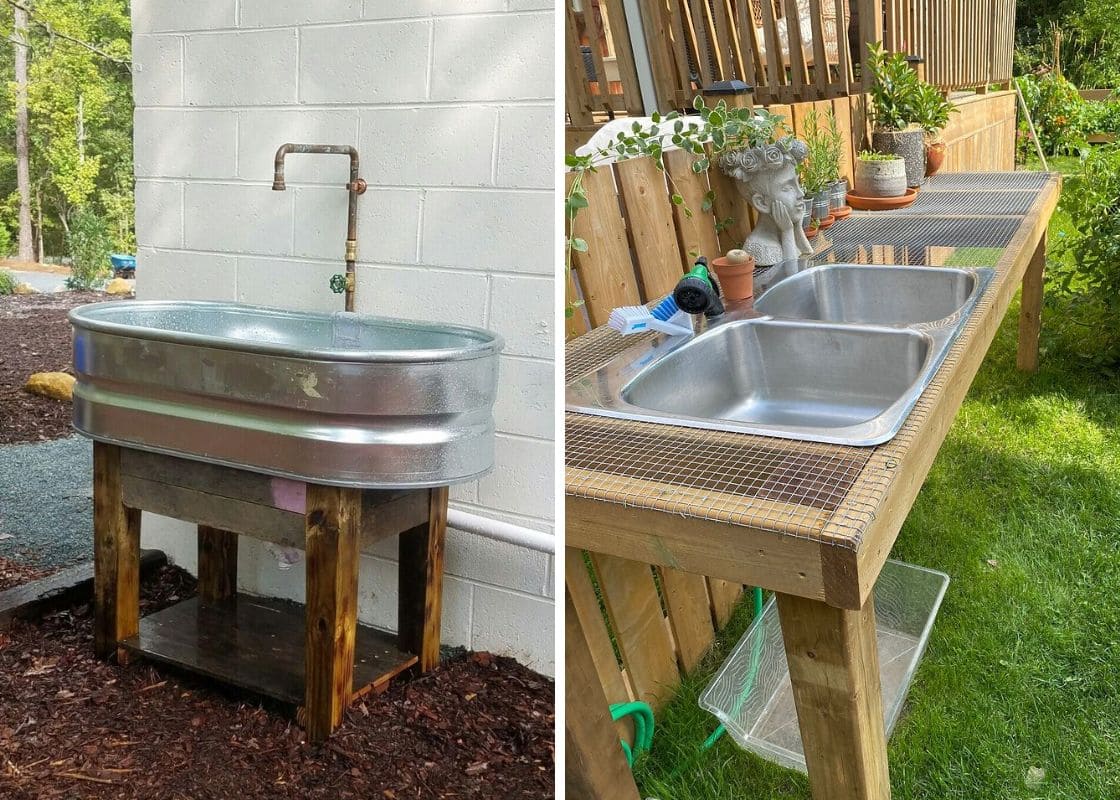Materials and Tools Needed
Materials List
- Reclaimed wood planks or logs
- Gravel or sand for the base
- Wood sealant or preservative
- Landscape fabric
- Optional: Border materials (stones, bricks, etc.)
Tools List
- Measuring tape
- Shovel or spade
- Level
- Saw (for cutting wood)
- Hammer and nails, or screws and drill
- Safety gear (gloves, goggles)
Step 1: Planning and Designing the Pathway
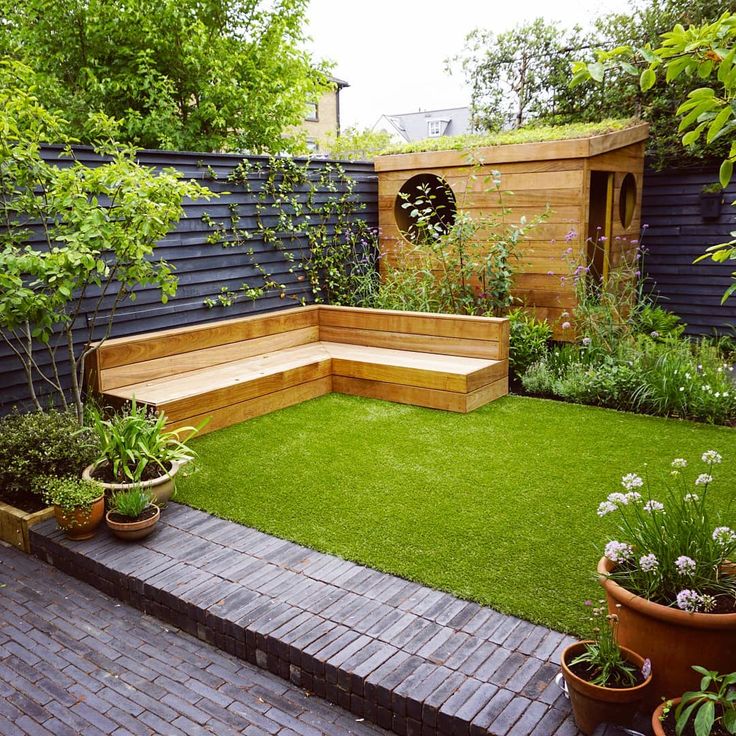
Alright, start by assessing your garden’s natural flow and deciding where you want the pathway to lead – perhaps to a cozy bench or a vibrant flower bed.
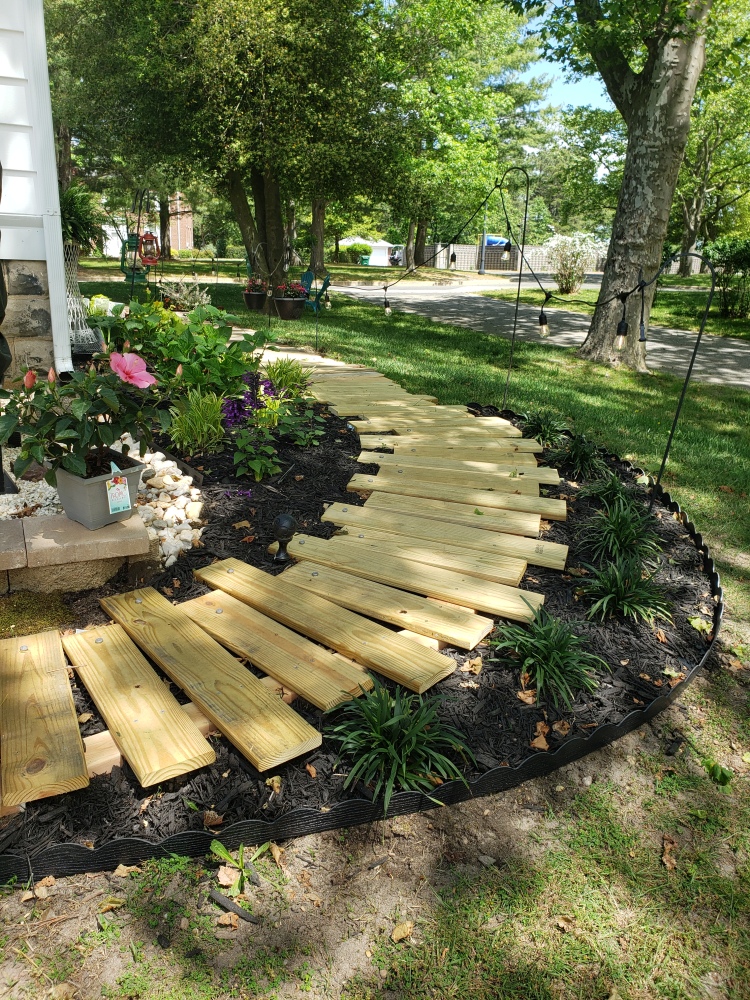

You can choose a style that suits your garden: a straight, formal path for a modern look, or gentle curves for a whimsical feel.
You also need to consider the width, length, and edging materials to define your pathway’s lines. Also, plan for proper drainage to prevent puddles.
Step 2: Preparing the Ground
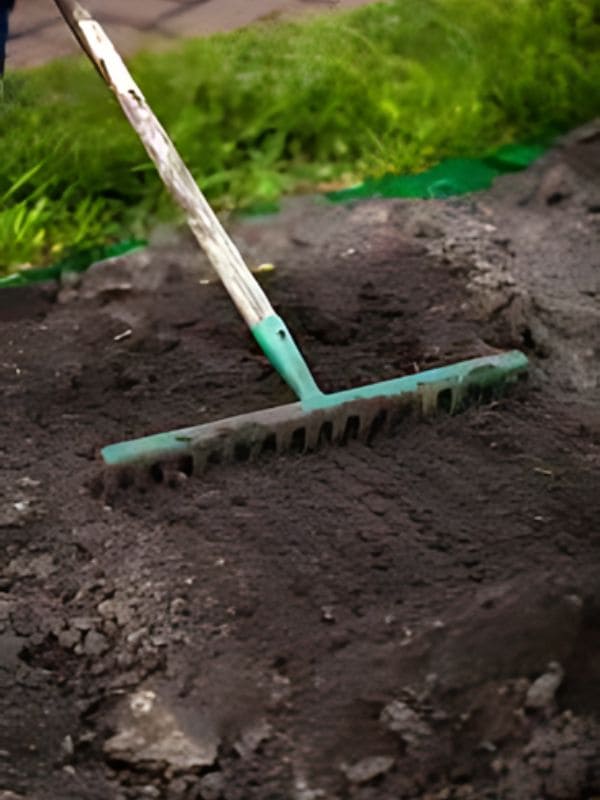
Now you have to clear the area for your path to remove any grass, rocks, or debris.
Once the area is clean, level the ground with a rake, smoothing out high spots and filling in low ones. This step is crucial, like laying the foundation for a house.
For an extra layer of protection, you can lay down landscape fabric over the compacted soil to help keep weeds from growing between your reclaimed wood planks.
Step 3: Cutting and Treating the Wood
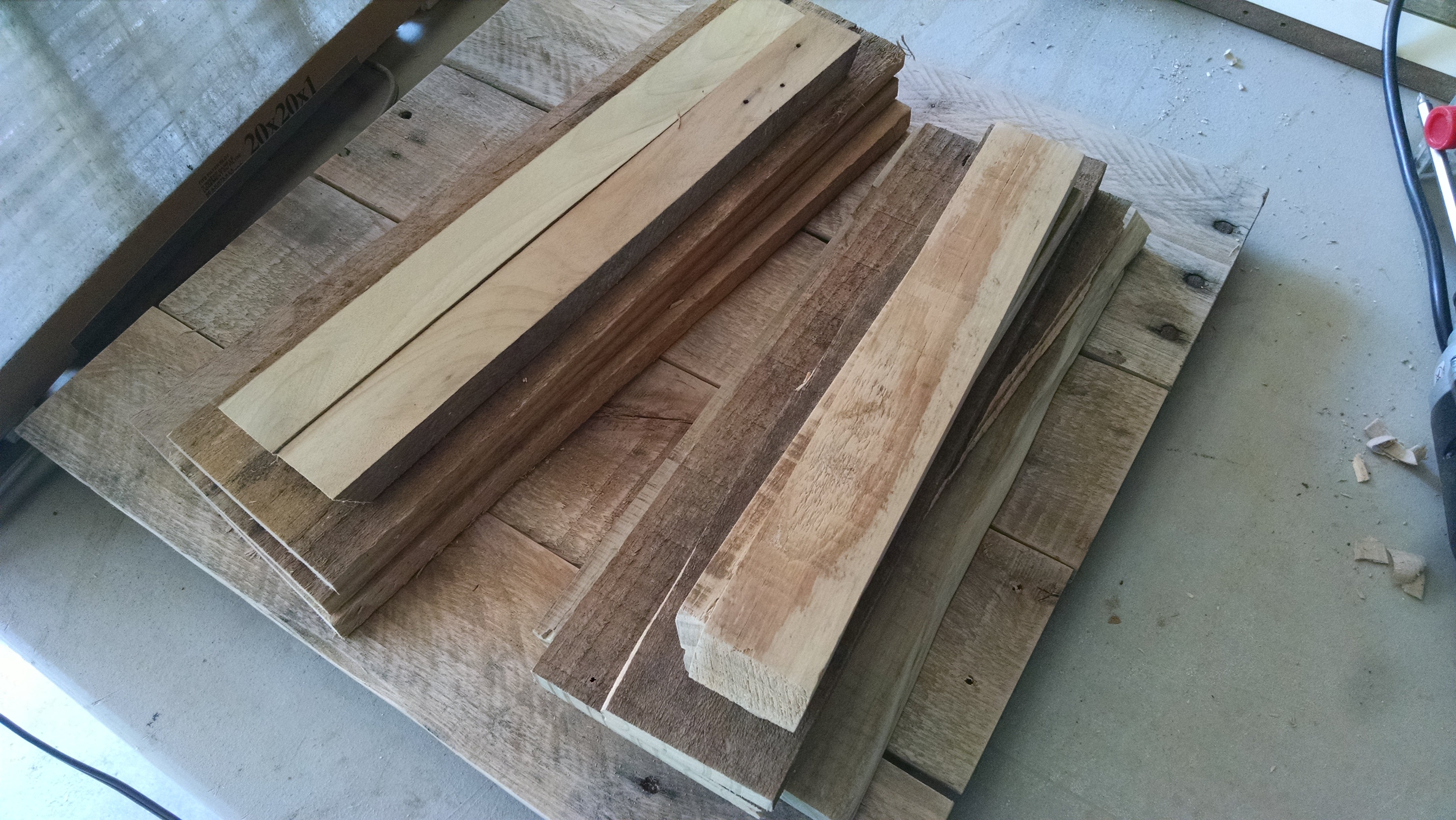
You need to measure and cut your reclaimed wood to the desired lengths – typically between 12 to 24 inches for pathway planks.
Using a miter saw ensures clean, precise cuts. Don’t forget to sand the edges to avoid splinters – your feet will appreciate it later!
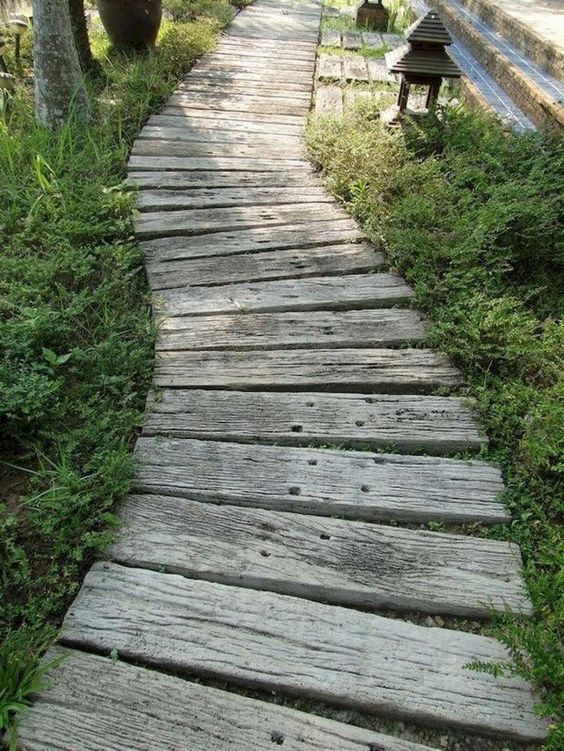
When choosing wood, consider its natural color and grain. Some woods will weather beautifully to a gray patina, while others retain their original hue with regular maintenance.
Personally, I find weathered wood adds a rustic, charming touch to the garden, blending perfectly with the natural surroundings.
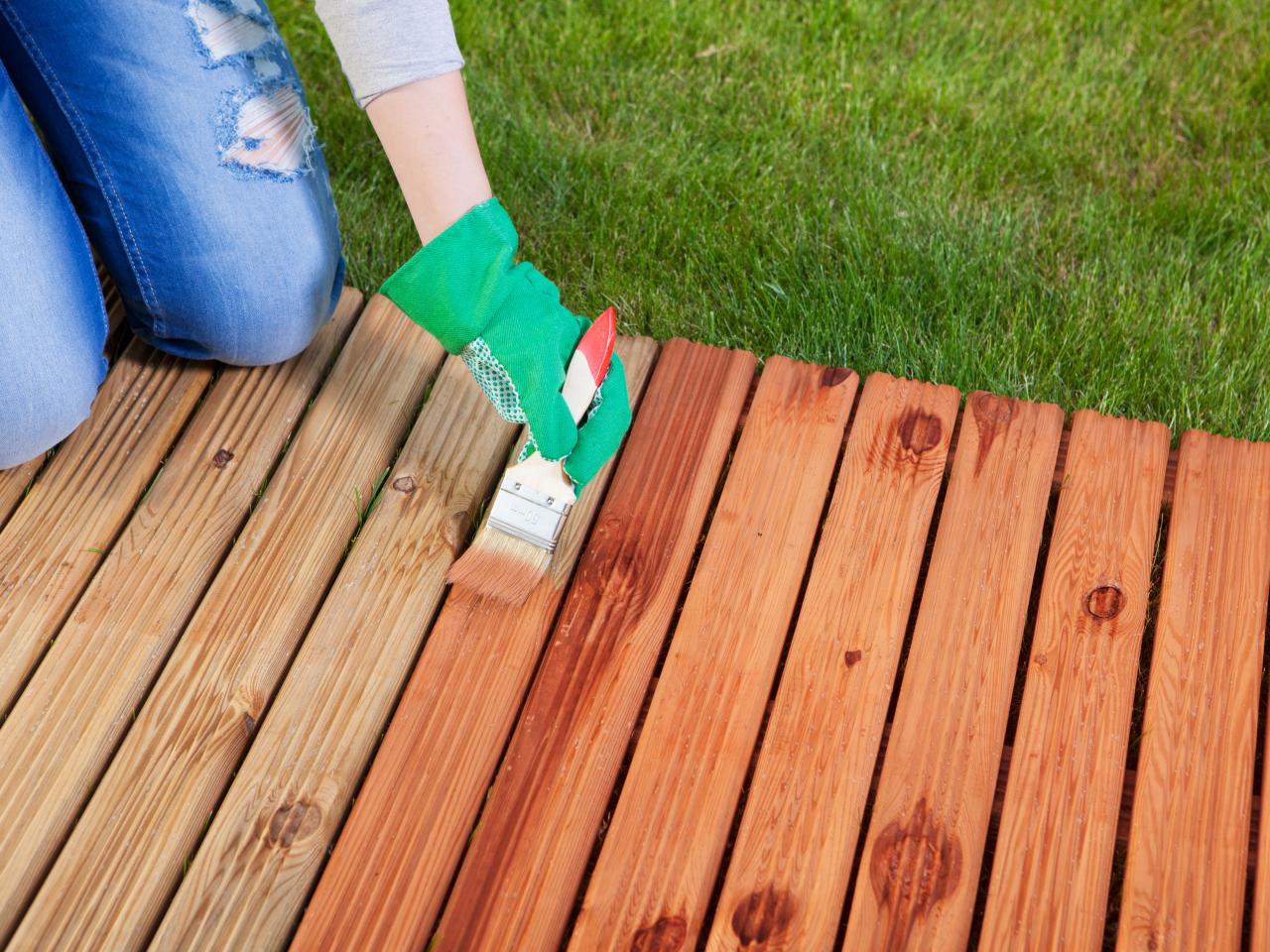
After cutting, treat the wood with a high-quality preservative to protect it from moisture, insects, and decay. This step is vital for longevity, especially in outdoor settings.
Step 4: Laying the Pathway
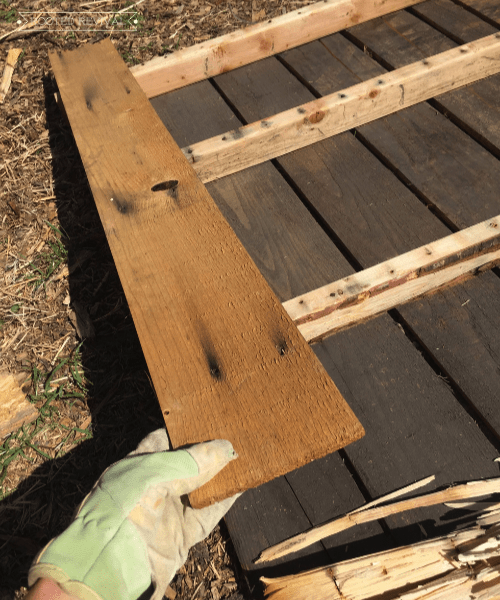
Now you can dry-fit the reclaimed wood pieces, laying them out on the ground without securing them.
This lets you see how they fit together, like assembling a puzzle, allowing for adjustments before anything is permanent.
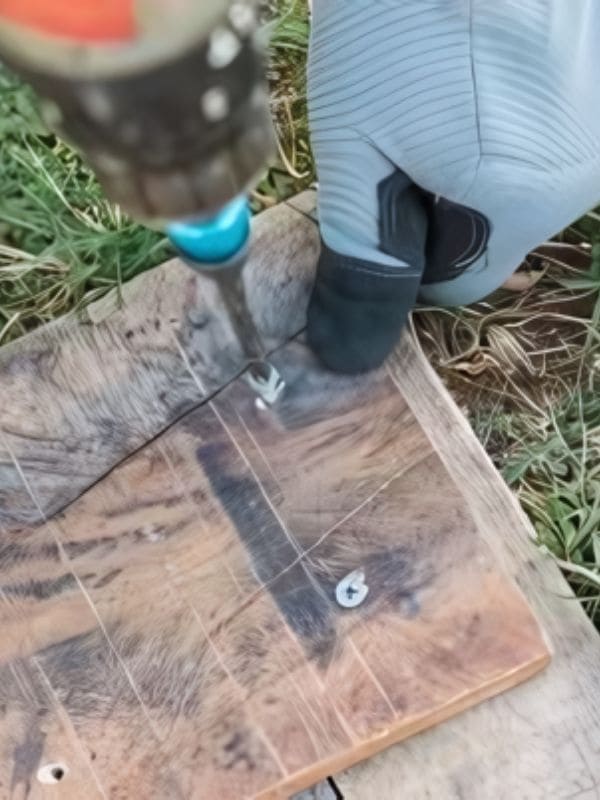
Once satisfied with the layout, secure the support boards to the ground using outdoor deck screws, ensuring they’re level and evenly spaced for a stable base.
Next, lay your top planks across the support boards, either lining them up for a straight path or staggering them for a more whimsical look.
Step 5: Finishing Touches
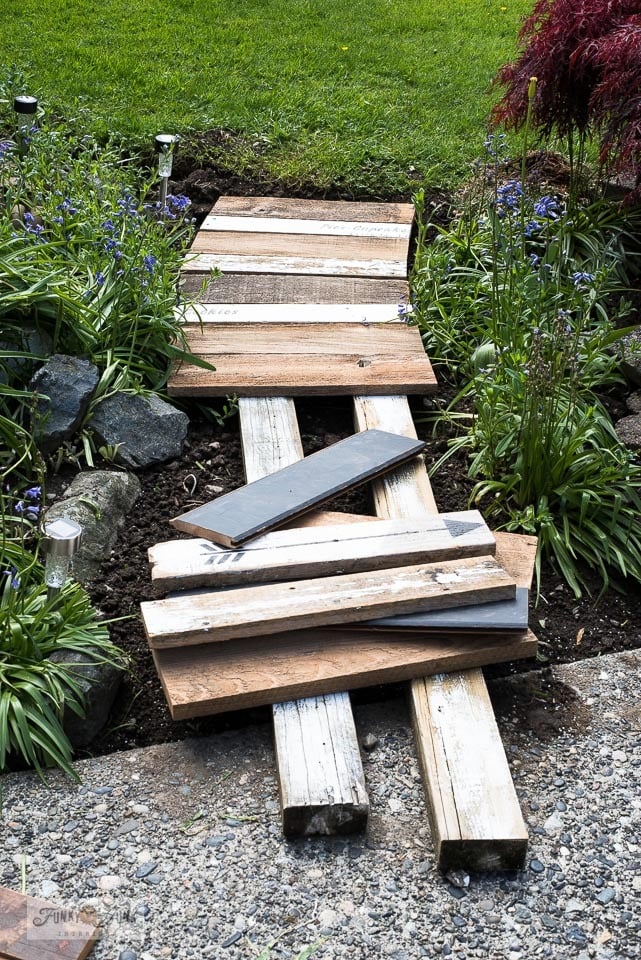
You should consider using bricks, metal, reclaimed timber, or even stones to define your pathway.
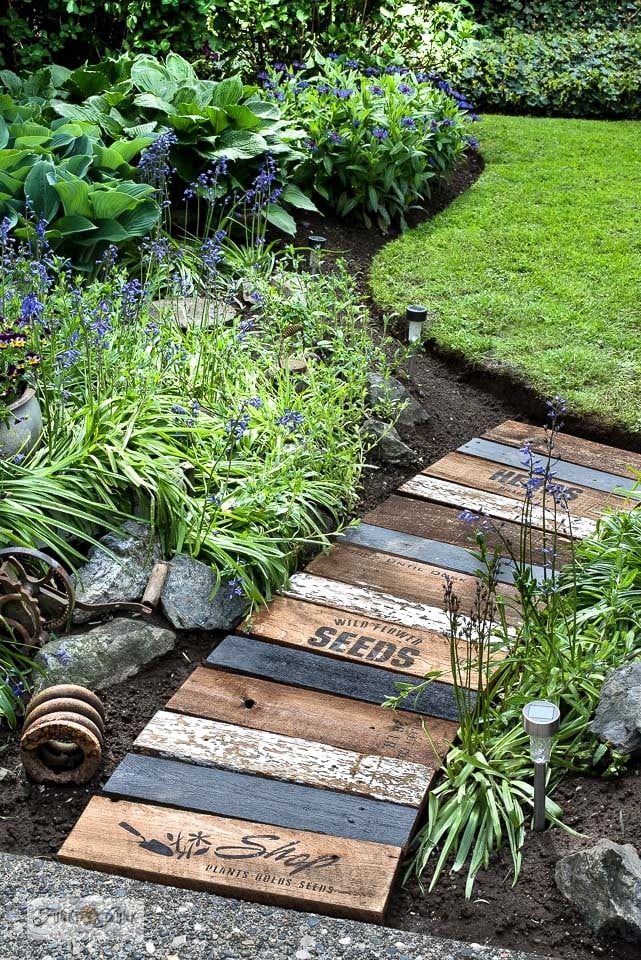
To personalize the pathway, try stenciling designs onto the top planks.
I once painted random planks in Fusion’s Ash, and it looked fantastic! Garden stencils can create fun patterns, making the pathway look unique.
Step 6: Maintenance Tips
Regular cleaning is essential to keep your pathway looking pristine. You should sweep away leaves, dirt, and debris with a broom or leaf blower.
For stubborn dirt, use a mild soap solution and a scrub brush, then rinse thoroughly with a garden hose.
To protect the wood from moisture, you choose a dry day, and apply a water-repellent sealant to evenly coat all surfaces, including the plank sides to prevent warping and cracking.
